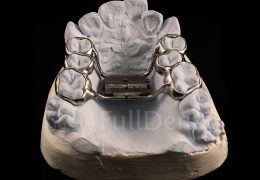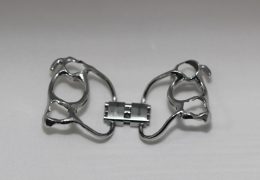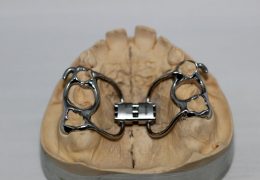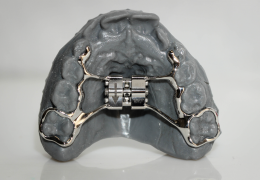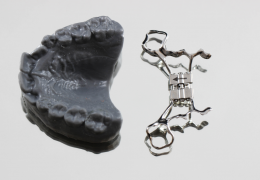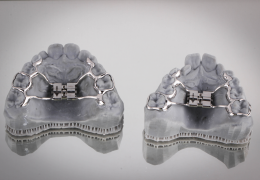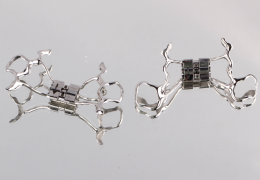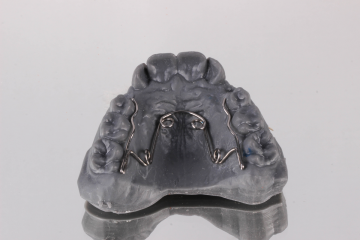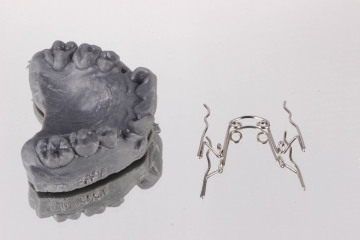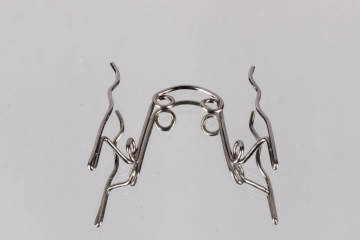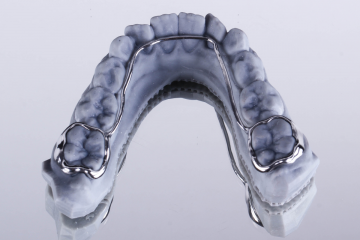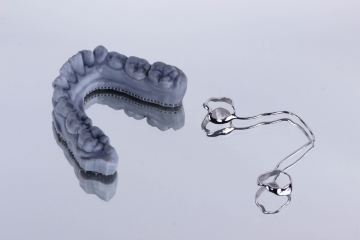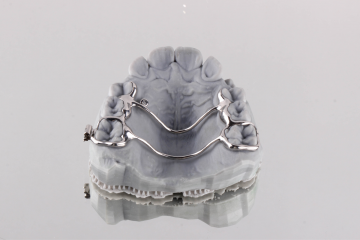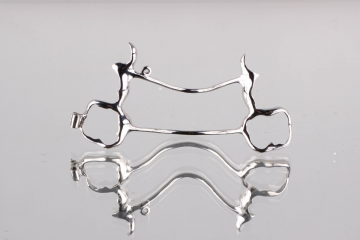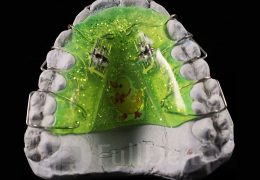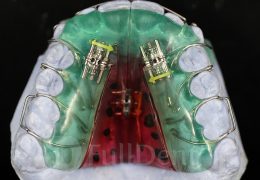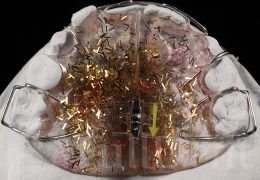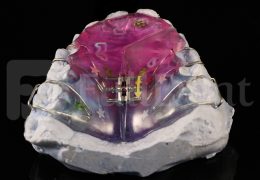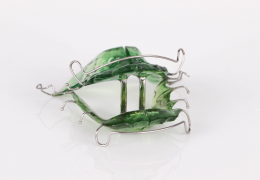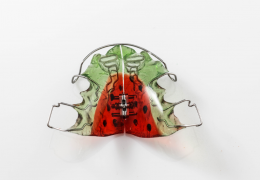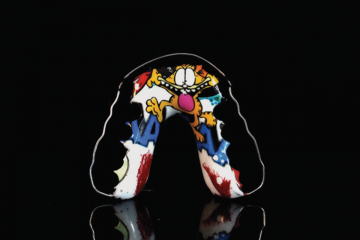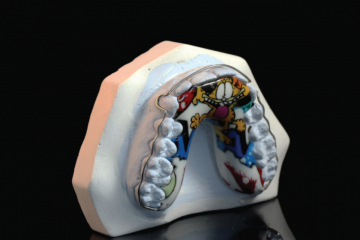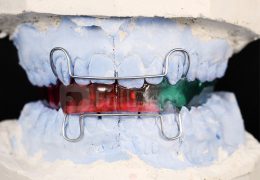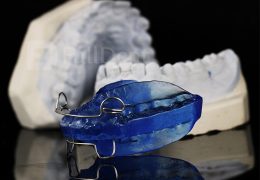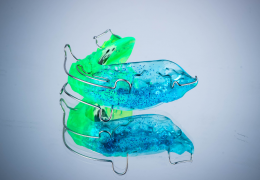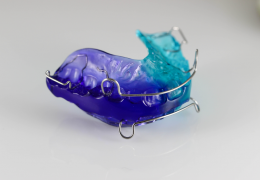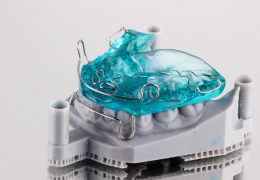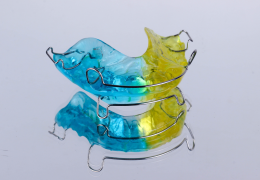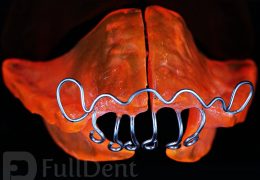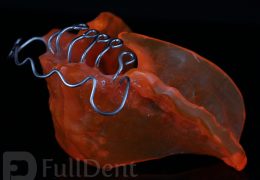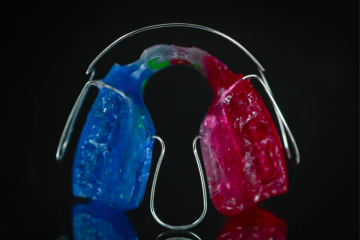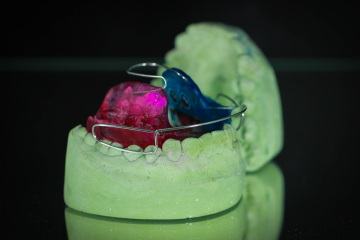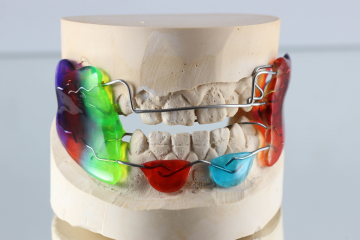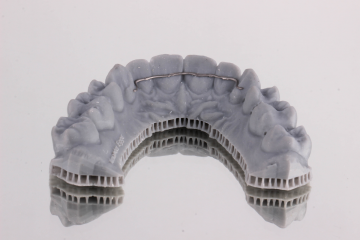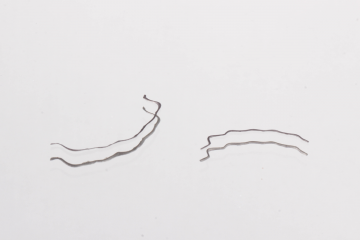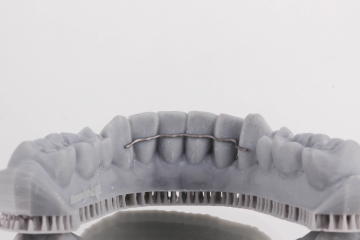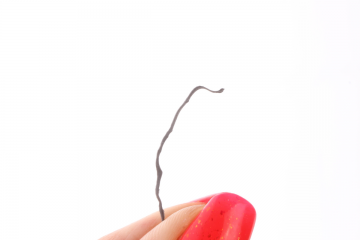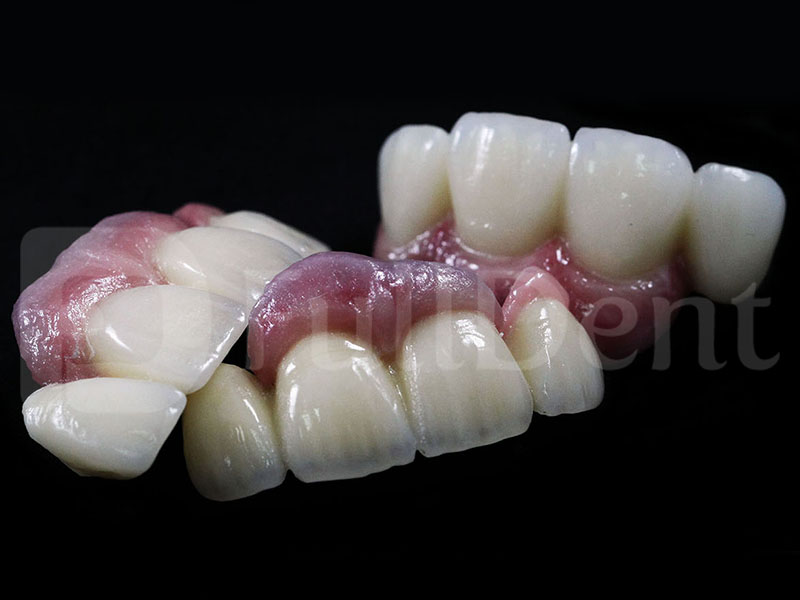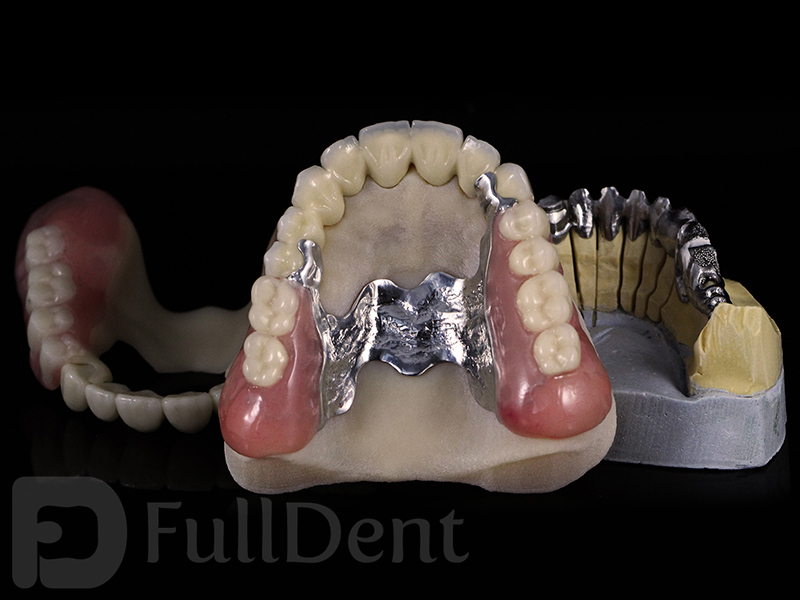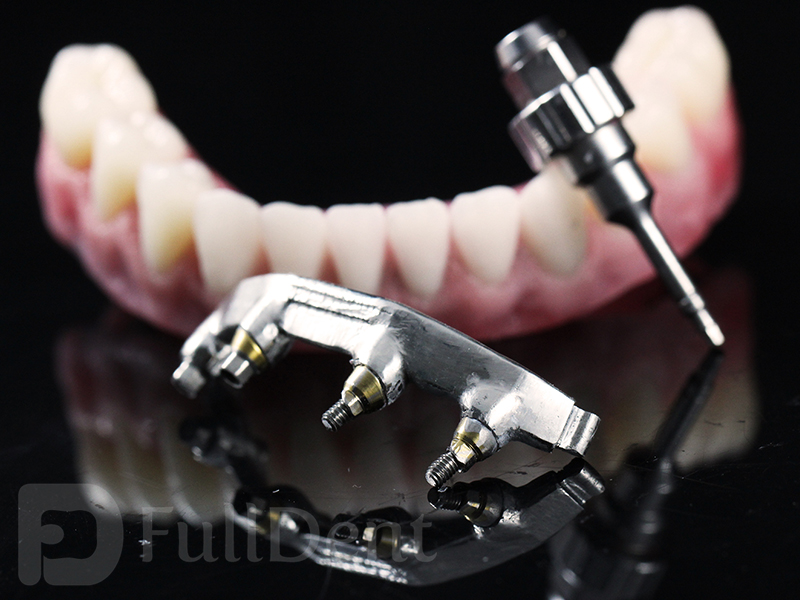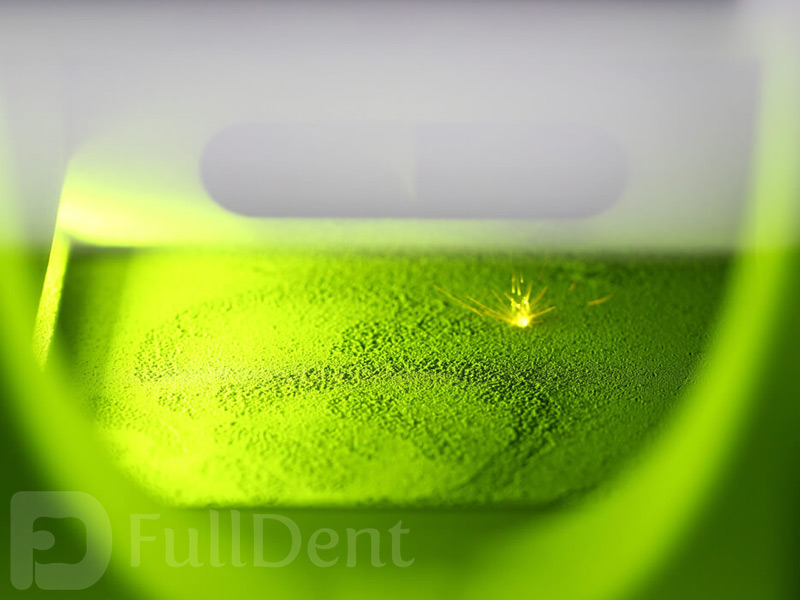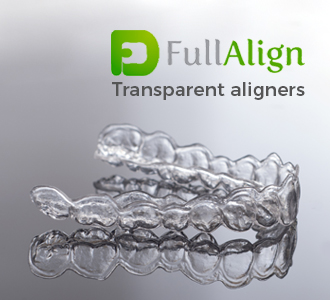Orthodontics is a specialty field of dentistry which deals with malpositioned teeth and jaws and treating of painful state of jaw muscles and joints. People usually identify orthodontics with aesthetical teeth work, but this branch is much more.
Having the ideal position of teeth and jaw brings many benefits to patients. Here are some:
- A beautiful smile which improves self-esteem,
- Lower pressure on teeth, gums, and bones, which leads to decrease of tooth enamel waste,
- Easier hygiene leading to fewer caries or gum pain,
- Improved speech, easier pronunciation, and better face shape
disables bruxism.
The obvious conclusion is that orthodontics should not be considered luxury but a legit need for patient's state improvement.
Advanced technology and worldwide trends in orthodontics made it possible for laboratory Full Dent to offer newest systems of orthodontic appliances that allow more comfortable, less painful and shorter therapy. And the results are long-term, providing your patients with a beautiful and confident smile.
For orthodontic treatments, we use removable appliances and FullAlign aligners, all produced in our own lab.
Rapid Palatal Expander
Rapid Palatal Expander is used for treatment or prevention of malocclusions (inadequate bites), ideal for use at an early age. This appliance is used to widen the upper jaw. The process is easy and bearable, most effective at the age of 8 to 14.
The expander creates side force which gradually presses upper jaw, separating it slowly. With this treatment more space is created for permanent teeth, eliminating a need for healthy teeth removal.
Quad Helix Palatal expander
Indications:
- crossbite,
- narrow or compressed upper dental arch,
- crowding of the upper teeth.
A big advantage compared to other types of expanders is that during use it does not require any adjustments by the parent or the patient.
Lingual arch and TPA (trans palatal arch)
They represent mobile orthodontic devices that serve us to preserve space in the dental arch in case of premature loss of milk teeth caused by caries or some other cause. It is usually worn until the eruption of all permanent premolars. Lingual arch – connects two molars in the lower jaw. Transpalatal arch – connects two molars in the upper jaw.
Nance Holding Appliances
Multifunctional orthodontic appliances intended for the youngest patients.
The Fränkel appliance is used to effect changes in the sagittal, transverse and vertical relationship of the jaw and to remove abnormal muscle forces in the labial and buccal regions that limit skeletal growth, thus providing an environment that maximizes skeletal growth.
Schwarz Appliances
Schwarz expander is a lower expansion appliance designed to create more space for permanent teeth growing. It consists of a supporting plate-like acrylate body, placed orally, into which the vestibular-located retention element is retained. Also, it contains active elements, screws, and springs (extension screws that turns around depending on the treatment plan and agreement with the dentist).
This device provides a vestibular movement of the upper anterior dentition and distal movement of the lower teeth.
There are different variations of this device, with several uses: protrusion of the incisors without the transverse expansion of the tooth (T-plate), protrusion of the frontal teeth and transferal expansion of the tooth port (Y-plate), slabs for the treatment of bad habits (plaque sucking, inflammatory swallowing, etc.).
Another modification, called Hotz plate, in its frontal palatal part has a ridge with a vestibular slanted side. With this device, we are able to make sagittal and vertical direction corrections.
Retention Plate Appliances
These appliances are usually given to patients after completion of active orthodontic therapy phase. Haeleyeva and Wraparound plates are commonly used for this purpose. A decision between the two is based on the anomaly, length of active therapy and the age of the patient.
The first one is made of labial bows and Adam clasp but could contain side ridge, as well. Acrylate body covers oral sides of teeth arches and alveolar attachments. Purpose of the device is retaining desired teeth position, making oral hygiene easier, allowing physiological teeth movement and fulfilling all aesthetical and functional demands.
Monobloc
Monobloc is an orthodontic appliance placed in a mouth of a user, which changes activities and tone of muscles, transmitting their force onto the bone and dental structures. With consistent use, the desired changes are made regarding the correction of bite irregularities. It corrects both jaws at the same time and is used to regulate their intercourse. Monobloc is recommended for kids aged 10 to 12 years.
Grude Activator
Grude activator has an acrylic body which covers palate and, if needed, has screw implemented for transversal expansion. In the internal part of the upper and lower dental arrays, there is an oval opening that covers grid or filarette. Thorns appear from palatal part of the appliance, each having complementary upper and lower incisive.
For the extrusion of the upper anterior teeth, a Girlandiformni labial bow could also be implanted.
Bionator Appliance
Bionator appliance is a functional appliance used for correcting different malocclusions in orthodontics. What it does is:
- Securing contact between the lips,
- Making a contact of a tongue with the palate,
- Increasing oral space and improving oral functions,
- Elongating mandible,
- Correcting interline relationships.
There are three types of Bionator: Standard type (I) for treatment of Class II division I and class II/1 and II/2, Shield type (II), and Progenies inversion type (III).
Frankel Tip 3 and Frankel Tip 2
Multifunctional orthodontic appliances intended for the youngest patients.
The Fränkel appliance is used to effect changes in the sagittal, transverse and vertical relationship of the jaw and to remove abnormal muscle forces in the labial and buccal regions that limit skeletal growth, thus providing an environment that maximizes skeletal growth.
Fixed retainer
A fixed retainer is a metal wire that is attached to the inner (oral) side of the tooth and remains fixed throughout the retention period and is not visible because it is on the inner (oral) side of the tooth. The advantage of this type of retainer is that you don't have to think about wearing it and possibly losing it somewhere. The disadvantage is more demanding cleaning and the possibility of wire breakage. We can say that with the software the retainer is designed and adapted to the palatal/lingual surfaces, individually for each jaw and at the request of the orthodontist,
it can be milled from titanium or bent from Dentaurum wire using a special device.
Full Dent d.o.o. is a dental laboratory providing modern reconstructive and aesthetic dentistry solutions. With years of experience, and by using certified dental materials and advanced technology, we are offering following services: fixed, removable and combined prosthetics, and FullAlign – invisible removable aligners.

